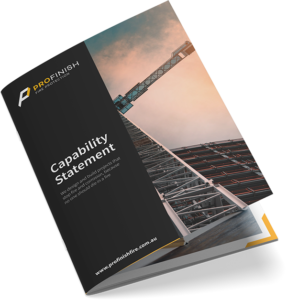In high-risk industrial environments, where hazardous materials, heavy machinery, and complex processes are involved, fire safety is paramount. Implementing effective passive fire protection measures is crucial to safeguard lives, protect valuable assets, and ensure business continuity. This blog post delves into the significance of passive fire protection in industrial facilities, exploring the key considerations, essential strategies, and recommended practices for creating a robust fire safety framework.
Understanding the Unique Fire Hazards in Industrial Facilities
Industrial facilities present unique fire hazards due to the presence of flammable substances, high-temperature processes, and intricate machinery. Recognising these hazards is vital for designing an effective passive fire protection system. Chemical storage areas, production zones, and equipment rooms are critical areas that demand specific attention.
Fire-Rated Construction Materials for Industrial Environments
Choosing the right fire-rated construction materials is crucial for industrial facilities. Walls, ceilings, and floors must be constructed using fire-resistant materials to inhibit fire spread and maintain compartmentalisation. Intumescent coatings, fire-resistant boards, and cementitious sprays such as vermiculite are commonly used to enhance the fire resistance of structural elements.
The installation of passive fire materials in construction by fire protection professionals holds immense importance in ensuring the effectiveness and reliability of fire safety measures. These professionals have the expertise and knowledge that’s required to properly select, install, and integrate passive fire materials into the building’s structure. Their understanding of fire codes, regulations, and industry best practices enables them to identify critical areas where fire resistance is necessary and implement appropriate solutions.
Implementing Fire-Rated Ductwork and Penetration Seals
Industrial facilities often have numerous ducts, pipes, and cable penetrations that can compromise fire safety. Installing fire-rated ductwork, fire dampers, and robust penetration seals helps prevent the spread of fire and smoke through these pathways. Regular inspections and maintenance ensure the integrity of these fire-stopping measures.
Engaging a fire protection professional before commencing the installation of fire stopping penetrations in construction projects brings numerous benefits, ensuring both effectiveness and smooth project execution. By involving these professionals early on, they can review the plans and specifications to identify potential fire safety risks and recommend appropriate solutions.
Their expertise in passive fire protection allows for proper coordination and integration of fire-stopping measures with other trades. With their guidance, trades can understand the specific requirements and techniques for installing penetrations in a fire-safe manner, ensuring compliance with fire codes and regulations. This proactive approach not only minimises the chances of costly rework or delays but also enhances the overall effectiveness of the fire protection system.
Importance of Regular Inspections and Maintenance
Regular inspections and maintenance are essential to ensure the ongoing effectiveness of passive fire protection systems in industrial facilities. Periodic checks, testing of fire-rated barriers, inspection of seals, and maintenance of fire safety equipment help identify any potential issues and ensure compliance with regulations.
Creating and maintaining a proper penetrations register significantly eases the maintenance and compliance of penetrations in buildings. This register serves as a centralised record of all installed penetrations, their fire-stopping measures, and associated maintenance activities. By documenting essential details such as location, type of penetration, fire-rated sealant used, and installation date, facility managers can easily track and manage the maintenance requirements for each penetration.
Regular inspections, testing, and maintenance can be scheduled and documented systematically, ensuring compliance with fire safety regulations and standards. In the event of renovations or upgrades, having an up-to-date penetrations register simplifies the identification and management of existing penetrations. This enables a seamless integration of new fire-stopping measures. By maintaining an accurate and comprehensive register, building owners and facility managers can stay proactive in ensuring the integrity of penetrations, minimising the risk of fire spread and enhancing overall fire safety.
Engage a passive fire protection expert
Industrial facilities face unique fire hazards that demand robust fire safety measures. Implementing effective passive fire protection systems plays a vital role in mitigating risks, protecting lives, and preserving valuable assets. By engaging passive fire experts, using fire-resistant construction materials and installing fire-rated ductwork and penetration seals in industrial facilities, a comprehensive fire safety framework is achieved.
Prioritising passive fire protection in industrial environments ensures a safer work environment, reduces downtime, and safeguards against devastating fire incidents.

